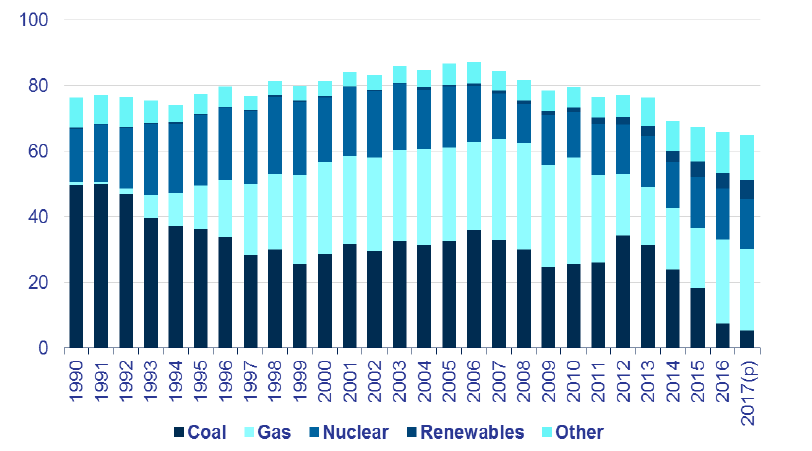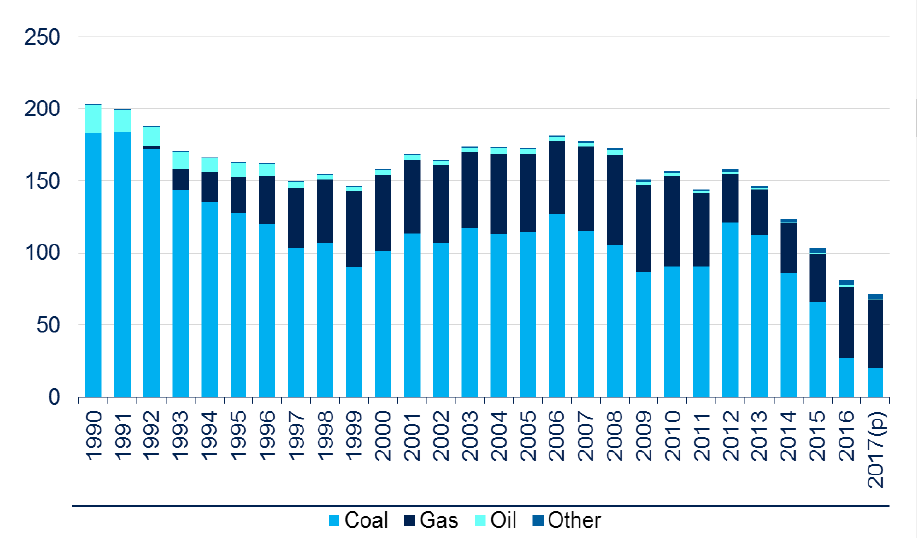In the UK we have a mix of different power generation systems in play to satisfy the electricity demand on a daily basis. In the past, coal was the main fuel used to generate electricity and more recently, many of those coal-fired power stations have been converted to burning natural gas instead, reducing their carbon footprint. In addition to the predominantly gas fired power stations, electricity also comes from our nuclear power plants, renewable energy plants such as wind turbines, hydroelectric dams and solar. We also import some electricity from overseas when demand is high.
Of course, these different sources all have their own CO2 production levels ranging from virtually carbon-free renewables to the dirty fossil fuel systems. Even though each system contributes different amounts of electricity to the grid, it is relatively straight forward to calculate the average CO2 footprint of the electricity grid if we know the fuel mix.
Fuel mix for UK electricity generation, UK, 1990-2017, (Million tonnes of oil equivalent)

The chart above is taken from the Government’s report on the carbon footprint of the UK.
The graph above illustrates that the UK is producing less power now compared to 1990 levels. This is despite a 15% increase in the UK population over the same period. It also shows us that the dirtier fossil fuel sources are contributing less and the cleaner sources are contributing more. So, the overall energy efficiency improvements in the UK are helping reduce the carbon footprint of all of us.
CO2 emissions from electricity generation, UK, 1990-2017, (MtCO2)

This second chart taken from the same publication illustrates how much the CO2 output from electricity generation has reduced over the same 27-year period.
It seems obvious that the electricity we buy from our suppliers is now cleaner. This fact should be represented in the procedure we use when calculating how much carbon you can save by installing a heat pump instead of a fossil fuel boiler in your new-build property. The carbon footprint of any new-build project in the UK is calculated using the Standard Assessment Procedure (SAP). The procedure reflecting this greener mix of electricity production has now had its first major update since 2012 and the figures used to calculate carbon output for grid electricity have improved by 123%. This means electricity-powered heat pumps can now really make the difference when applying for planning permission for a new-build project.
The new SAP 10 calculations have now been adopted by the Greater London Authority when considering planning and we hope the other local authorities in the UK will adopt the new standard in due course.
If the energy efficiency of your new-build project needs improving to get planning permission, we can help you specify a system that will do just that. Get in touch or call us on 01293 821 345 for advice from our consultant engineers.






